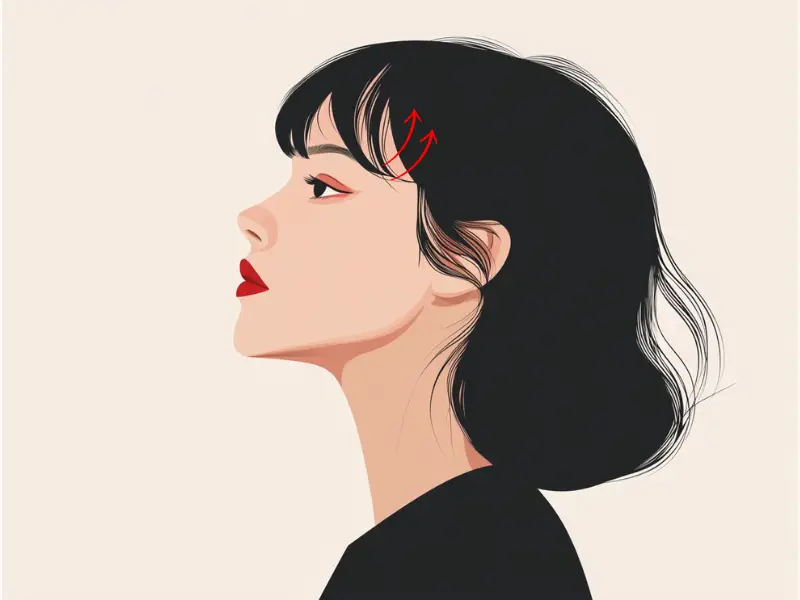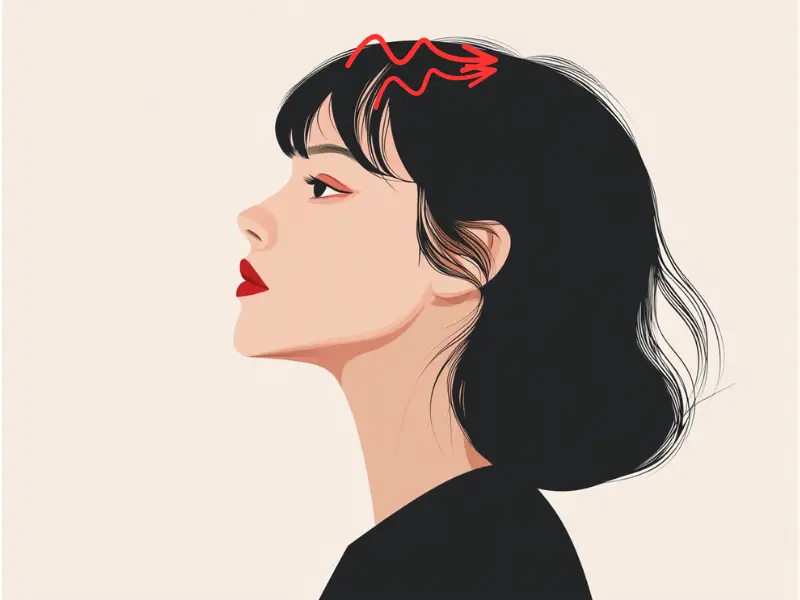Gua Sha is a powerful technique that can naturally lift and shape your eyebrows. By applying vertical strokes with a Gua Sha tool, you can engage the muscles around your brow area, helping to lift them without invasive treatments. If you’re new to Gua Sha, check out our basic guide to learn how it works.
Below are five Gua Sha eyebrow lift methods using vertical strokes, combined with an explanation of why eyebrow lifting is important for a youthful and refreshed look.
Why Lifting Your Eyebrows Is Important
Lifting your eyebrows has a significant impact on your overall facial appearance. As we age, the skin and muscles around the eyes can lose their elasticity, causing the eyebrows to droop. This can make the eyes look smaller, tired, or less vibrant, leading to a less youthful appearance.
- Opens up the eye area: A lifted brow can make your eyes appear more open, awake, and vibrant.
- Reduces signs of aging: Sagging eyebrows contribute to a heavy or tired look. Lifting them can create a refreshed appearance and diminish the look of wrinkles or sagging skin around the eyes.
- Improves facial symmetry: Eyebrow lifting techniques can enhance facial balance, making both eyebrows appear more even and aligned.
- Enhances natural features: Defined and lifted eyebrows frame the face, accentuating the eyes and other facial features. By maintaining a lifted brow, you highlight your natural beauty and create a more youthful expression.
With regular Gua Sha practice, you can help combat the natural sagging process and keep your brows lifted, giving your face a rejuvenated and balanced appearance.
“When performing Gua Sha for aesthetic purposes, such as lifting the eyebrows, it’s important to use gentle pressure to avoid leaving marks. This contrasts with therapeutic Gua Sha, where deeper pressure may be applied, and some discomfort is acceptable, especially when addressing underlying conditions.” — Ms. Mai Sogawa, Senior TCM Therapist
1. The Forehead Sweep
The forehead muscles are crucial for supporting eyebrow elevation. This technique uses vertical strokes to stimulate the frontalis muscle, which helps lift the eyebrows and smooth the forehead.
How to do it:
- Start by applying facial oil or serum to allow smooth movement.
- Start point: Place the flat edge of the Gua Sha tool just above the center of your eyebrow.
- End point: Glide the tool straight upward in a vertical stroke toward your hairline.
- Repeat this motion 5-10 times in the center, then move to the outer forehead areas above the brows and repeat the strokes.
This technique helps lift the entire forehead area, releasing tension and improving circulation, which lifts your brows and smooths the skin.

2. Brow Bone Lift
The brow bone is key to defining the shape and structure of the eyebrows. By targeting the area beneath the brows, this method uses vertical strokes to lift and sculpt the brow line.
How to do it:
- Start point: Position the curved edge of the Gua Sha tool just beneath your brow, starting at the inner corner near your nose.
- End point: Glide the tool straight upward in a vertical line toward your hairline.
- Repeat this motion 5-7 times along the brow bone, working from the inner brow to the outer edge.
This method emphasizes the lift under the brow, helping to create a more defined, sculpted appearance while reducing puffiness.

3. Vertical Temple Lift
To focus on lifting the outer part of the brows, the Vertical Temple Lift applies upward strokes. This technique avoids horizontal strokes to ensure the lifting effect remains natural and smooth.
How to do it:
- Start point: Place the Gua Sha tool at the outer corner of your eyebrow.
- End point: Glide the tool upwards in a vertical stroke, moving towards your hairline.
- Repeat this motion 5-10 times, making sure to keep the strokes vertical and light.
This technique gently lifts the outer edges of the eyebrows, giving them a subtle but effective lift.

4. Combining Forehead and Scalp Tension Relief
To reduce deep-set wrinkles on the forehead and lift your brows more effectively, it’s important to address tension not only in the forehead but also in the scalp. This method combines scalp tension relief with vertical strokes on the forehead for optimal results.
How to do it:
- Start point (scalp): Place the Gua Sha tool at the front of your hairline.
- End point (scalp): Glide the tool backward, moving toward the crown of your head as if combing through your hair. You can incorporate zigzag motions or gently shake the tool to release tension in the scalp.

- Start point (forehead): After addressing the scalp, place the Gua Sha tool just above your eyebrows.
- End point (forehead): Glide the tool upward in a straight, vertical stroke toward your hairline.
- Repeat both motions (scalp and forehead) 5-10 times to release tension and promote a more lifted brow.

“To reduce deep-set wrinkles on the forehead, it’s important to release tension in the scalp. Using Gua Sha in a zigzag pattern or gently shaking the tool as you glide from the eyebrows to the hairline can help. For wrinkles around the mouth, focus on releasing tension in the muscles around the nose and mouth with small, vibrating motions.” — Ms. Mai Sogawa, Senior TCM Therapist
Combining these methods can provide a deeper release of tension and improve circulation, helping to maintain a lifted brow and smooth the forehead over time.
Tips for Best Results
- Consistency is key: For noticeable improvements, practice these Gua Sha techniques 3-4 times per week.
- Use a high-quality tool: Choose a smooth Gua Sha tool made from jade or rose quartz, as these materials glide easily over the skin and follow the natural contours of the face.
- Apply hydrating serum or oil: Always apply a facial oil or serum before using your Gua Sha tool. This promotes smoother movement and protects the skin’s elasticity.
Incorporating these Gua Sha techniques into your skincare routine will naturally lift and shape your eyebrows, giving your face a youthful, refreshed look without the need for invasive treatments. The combination of targeted vertical strokes and consistent practice helps to maintain lifted brows and enhance your facial features.

Try our Anti-Aging Gua Sha Tool designed to bring out your skin’s natural glow.
Best Gua Sha Product- Anti-Aging: The tool is designed to target 11 specific aging signs such as wrinkles and sagging skin. By following the 7-step routine, users can improve skin firmness and reduce fine lines naturally.
- Enhances Skincare Routine: It works effectively with serums and lotions, boosting absorption and efficacy of skincare products.
- Visible Skin Improvement: Users can expect a smoother complexion, reduced puffiness, and a more youthful appearance.
 P. Sze
P. Sze 

















